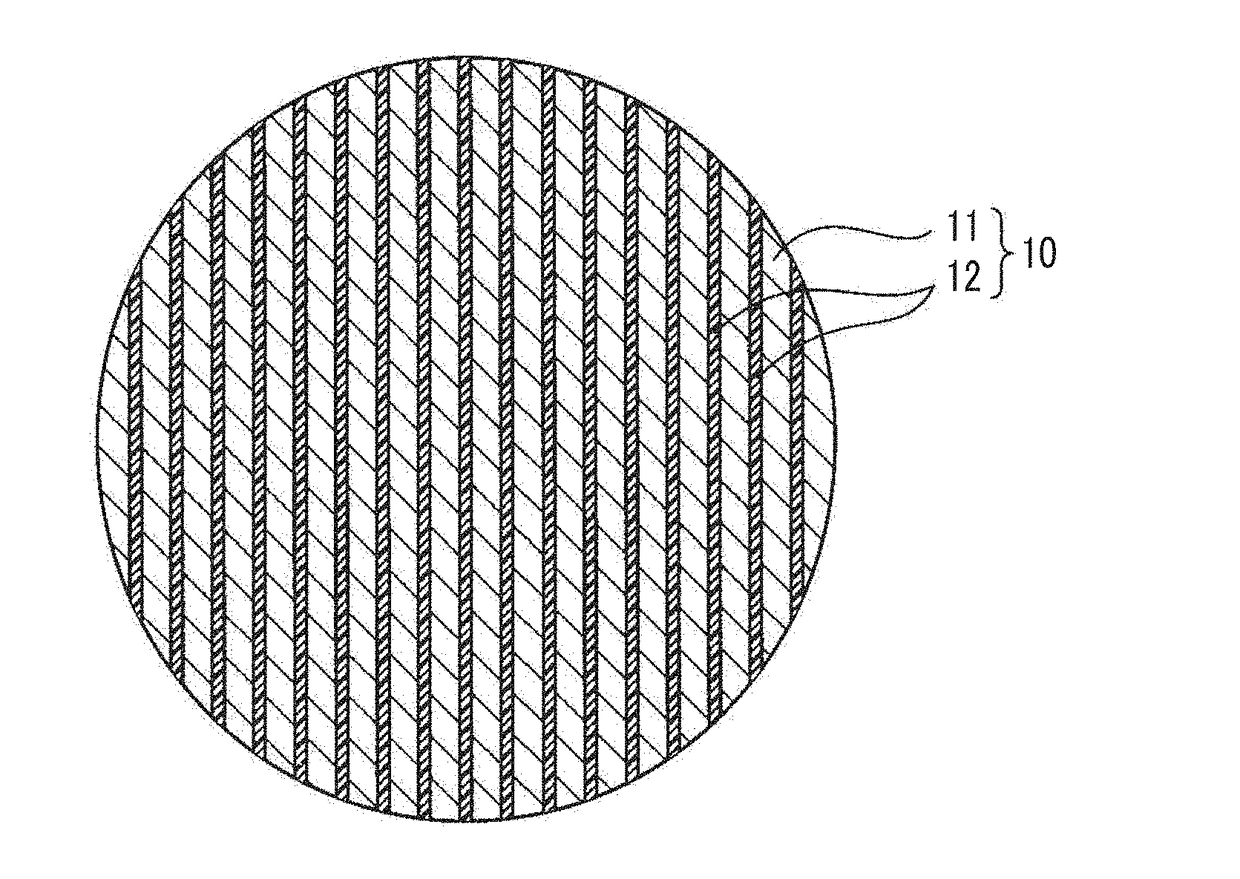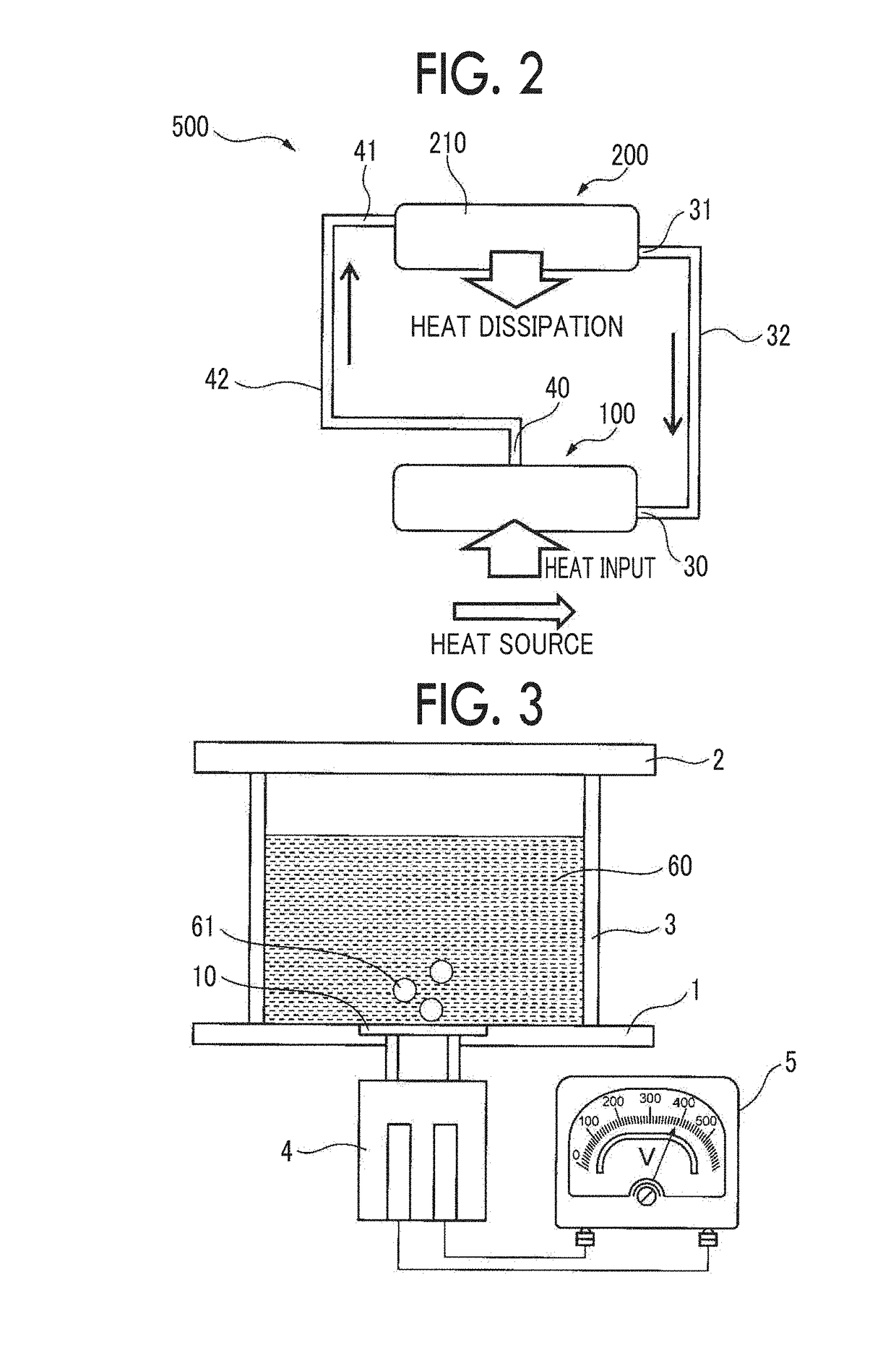Heat exchanger, heat exchange method using heat exchanger, heat transport system using heat exchanger, and heat transport method using heat transport system
a heat exchanger and heat exchange technology, which is applied in the field of heat exchangers, heat exchange methods using heat exchangers, and heat exchange methods using heat exchangers. the effect of improving the heat transfer coefficient and facilitating boiling
- Summary
- Abstract
- Description
- Claims
- Application Information
AI Technical Summary
Benefits of technology
Problems solved by technology
Method used
Image
Examples
example 1
[0097]On one side surface of a copper plate having a diameter of 40 mm, grooves having a width of 0.5 mm and a depth of 0.5 mm and rectangular cross sections were formed in a form of stripes at a pitch of 2.0 mm using a milling technique.
[0098]A two-liquid curable epoxy resin was filled into the grooves formed above, curing at room temperature and post curing were sequentially performed, and a boiling surface 10 in which a copper region with a width of 1.5 mm and an epoxy resin region with a width of 0.5 mm were alternately provided in a form of stripes was formed. The thermal conductivity of the epoxy resin in the epoxy resin region was 0.1 W / mK.
[0099]A temperature of superheating ΔTsat of the boiling surface 10 was set to 30° C., a boiling experiment at a normal pressure was performed, and a heat transfer coefficient h was obtained in the same manner as in Comparative Example 1 except that the boiling surface 10 was used. The obtained heat transfer coefficient h was 0.65 as a rela...
examples 2 to 7
[0100]Boiling surfaces 10 having a form of stripes and a different width of a copper region were formed in the same manner as in Example 1 except that pitches of stripe grooves formed were changed as shown in Table 1.
[0101]A temperature of superheating ΔTsat of the boiling surface 10 was set to 30° C., a boiling experiment was performed at a normal pressure, and a heat transfer coefficient h was calculated in the same manner as in Comparative Example 1 except that the boiling surfaces 10 were used. The calculation results of the obtained heat transfer coefficient h are shown below in Table 1 and FIG. 4 as relative values with respect to the heat transfer coefficient h in Comparative Example 1.
TABLE 1Structure of boiling surfaceWidth of theWidth of thefirst heatsecond heatHeat transferconductionconductioncoefficient hPitch (mm)region (mm)region (mm)(relative value)ComparativeMirror surface1ExampleExample 12.01.50.50.65Example 23.02.50.52.24Example 34.03.50.52.35Example 45.04.50.51.94...
PUM
 Login to View More
Login to View More Abstract
Description
Claims
Application Information
 Login to View More
Login to View More - R&D
- Intellectual Property
- Life Sciences
- Materials
- Tech Scout
- Unparalleled Data Quality
- Higher Quality Content
- 60% Fewer Hallucinations
Browse by: Latest US Patents, China's latest patents, Technical Efficacy Thesaurus, Application Domain, Technology Topic, Popular Technical Reports.
© 2025 PatSnap. All rights reserved.Legal|Privacy policy|Modern Slavery Act Transparency Statement|Sitemap|About US| Contact US: help@patsnap.com



